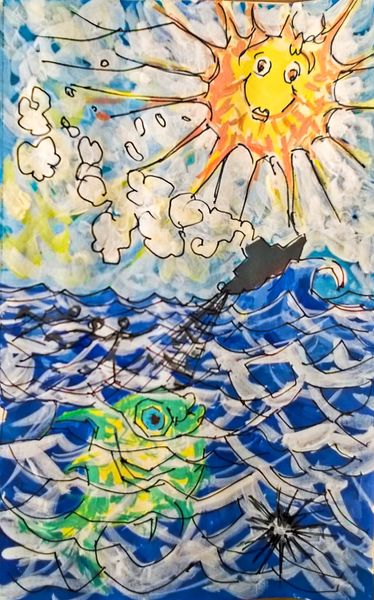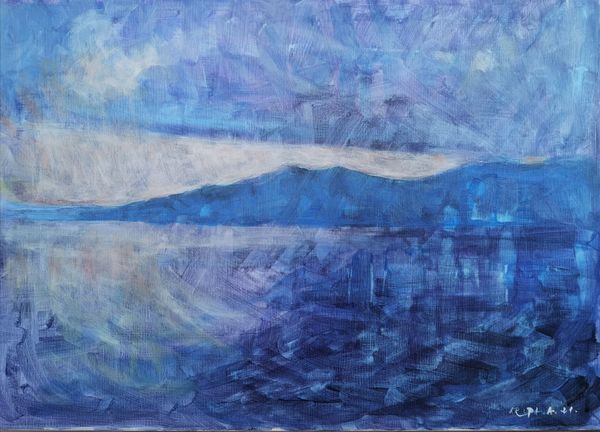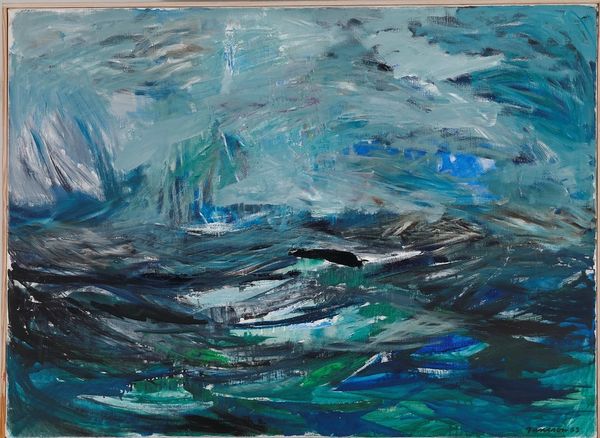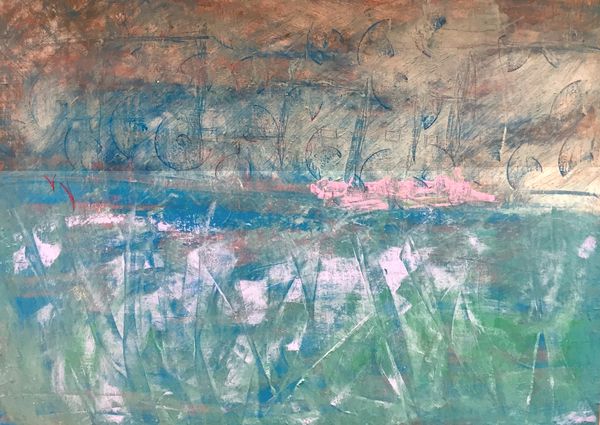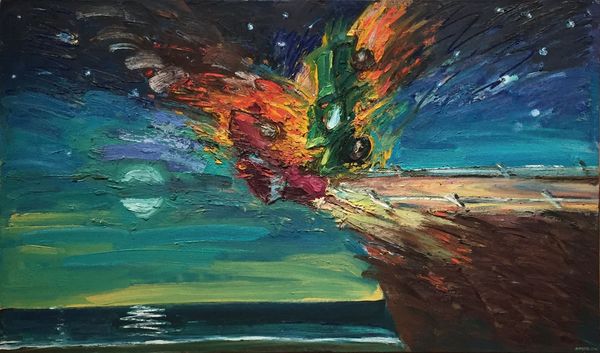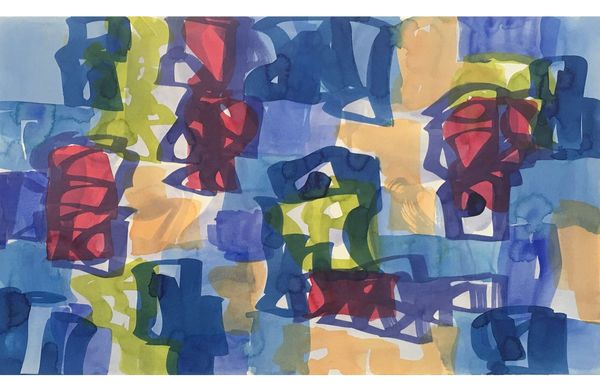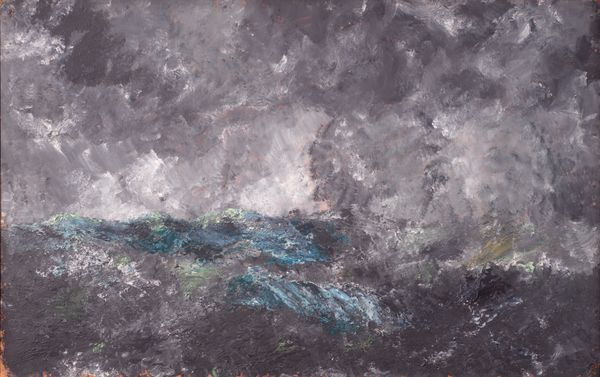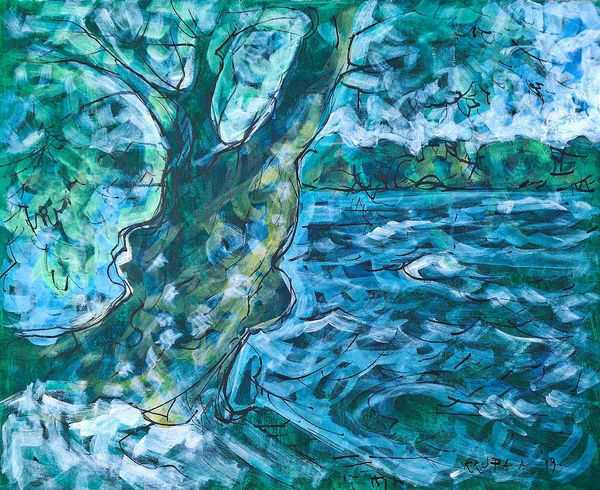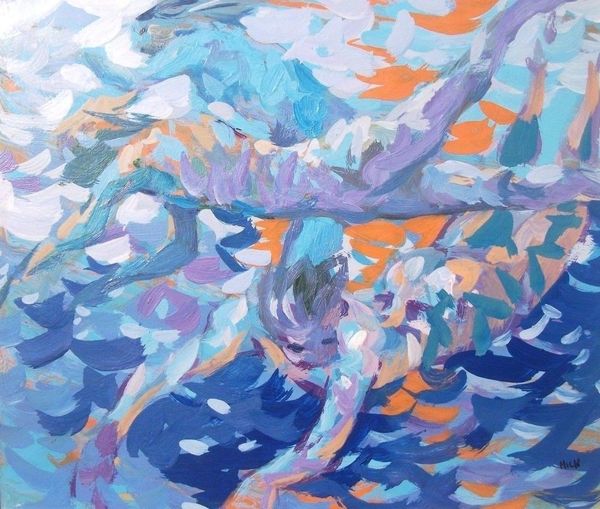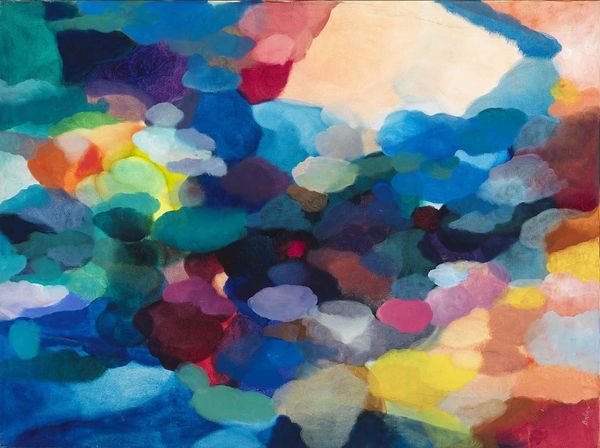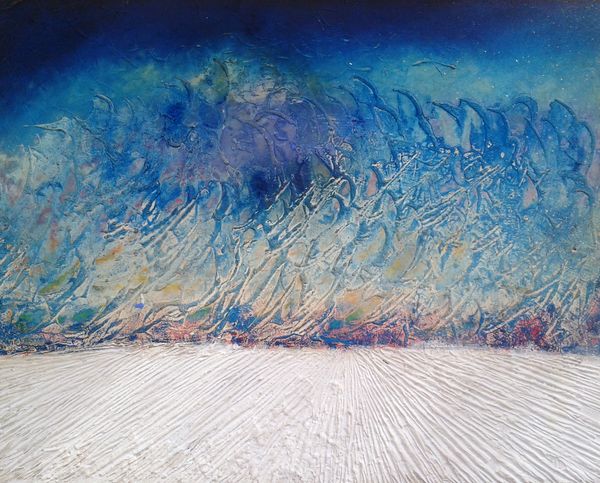
watercolor
#
landscape
#
watercolor
#
geometric-abstraction
#
abstraction
#
abstract art
#
modernism
Copyright: Else Alfelt,Fair Use
Editor: We're looking at Else Alfelt's "Abstract Composition," done in watercolor. I see cool blues and greens, a central shape like a sun or moon, and geometric forms layered across the whole picture. What do you see in this piece? Curator: It strikes me as a particularly potent articulation of Alfelt’s broader pursuit of transcendence through abstraction. Consider her context: Alfelt was a key figure in the COBRA movement, a collective of artists who challenged established norms, seeking to tap into primal energies. Looking at this piece, how might its seeming abstraction, almost a landscape, connect to questions about the societal role of women artists, and perhaps Alfelt's own interiority, during her time? Editor: I hadn't thought about it that way, but the cool tones now seem a bit less inviting, maybe even a little...austere. It makes me wonder about what she was pushing against. Curator: Exactly. It's easy to see this just as an "abstract composition," but by situating Alfelt in her socio-historical moment, we can begin to unravel how gendered expectations may have played a role in how she navigated her own artistic expression and contributed to broader conversations in COBRA. Think about how ideas of nature and femininity were linked - and how Alfelt’s “landscape” departs from those expected representations. How can abstraction serve as resistance? Editor: So, it's less about pure aesthetics, and more about using art to question and challenge? Curator: Precisely. Alfelt isn’t just creating pleasing patterns. She's intervening, proposing new ways of seeing, both literally and figuratively. This encourages us to interrogate not only the artwork, but also ourselves. Editor: That makes me appreciate her work even more, knowing the depth of thought behind it. Curator: And for me, it's a reminder of how crucial it is to continually challenge our assumptions about art and the artists who make it.
Comments
No comments
Be the first to comment and join the conversation on the ultimate creative platform.
